#sam katzman
Explore tagged Tumblr posts
Text
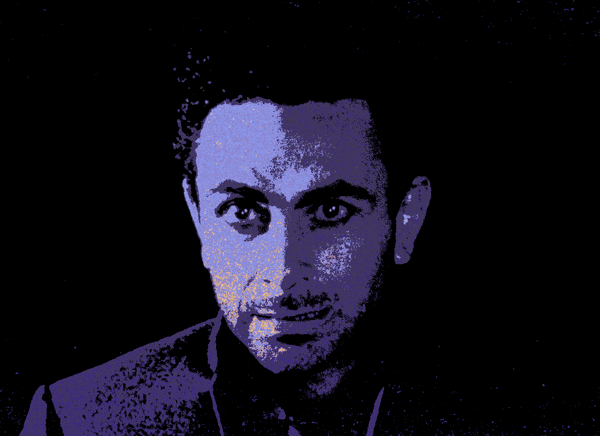
The Werewolf | 1956
#The Werewolf#Steven Ritch#Fred F. Sears#werewolf#Sam Katzman#wolfman#transformation#horror#horror movies#monster movie#hammersmith horror
109 notes
·
View notes
Text
THE WEREWOLF Reviews of '50s sci-fi horror
‘The horror of all mankind terrifies the screen!’ The Werewolf is a 1956 American sci-fi horror film produced by Sam Katzman and directed and narrated by Fred F. Sears (Earth vs. the Flying Saucers, The Giant Claw) from a screenplay written by Robert E. Kent (Diary of a Madman, Twice-Told Tales). The film’s soundtrack score was composed by noted composer Mischa Bakaleinikoff. Like the following…
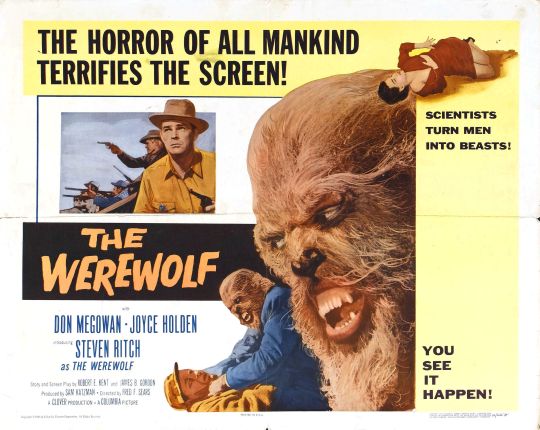
View On WordPress
#1956#Clay Campbell#Fred F. Sears#free to watch on YouTube#free to watch online#lycanthrope#lycanthropy#movie film#review reviews#reviews#Sam Katzman#sci-fi#Wolf Man
3 notes
·
View notes
Text
i desperately want to match with the person who's Bumble profile includes a pic of them with their Cold War Creatures: Four Films By Sam Katzman box set, we need to bond over enjoying The Giant Claw
0 notes
Text
Elvis defending co-star
— Behind the scenes: "Kissin' Cousins" (released in 1964)
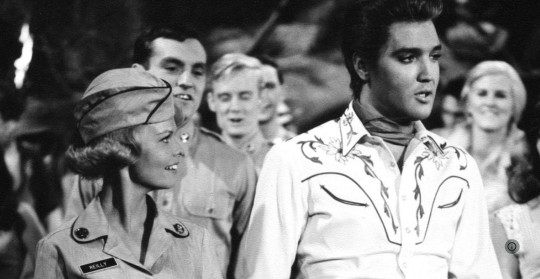
PICTURE: Elvis and Cynthia Pepper in "Kissin' Cousins" (1964)
Producer of "Kissin' Cousins" (1964) and "Harum Scarum" (1965), Sam Katzman was a well-known "quickie" film producer and director, and apparently he was not a particular easy person to deal with.
NOTE: Beforehand, I'd like to say that with this post I do not intend attesting anything on Sam Katzman personality neither on his relationship with the full crew during Elvis' movie productions he was the producer, let alone during Mr. Katzman's career in Hollywood as a whole. This post is about the one incident in which Elvis was a nice guy to one of his female co-stars, using his influence and position to help them when needed. Whether the kind of behavior as told further on this post was typical for Mr. Katzman or not, or if he and Elvis got along well or not, I am not able to have a say on the matter for it is not of my knowledge in depth (I recommend you to read the comments to better understanding why my note seemed appropriate). Without further ado, let's read what happened in 1963 during the film production:

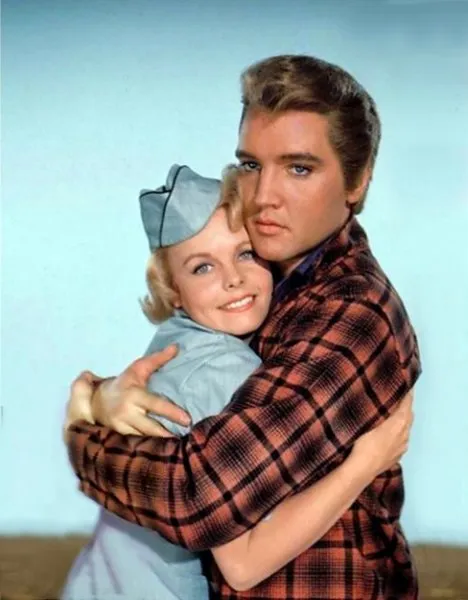

Cynthia Pepper, Elvis' co-star in "Kissin' Cousins", released her memoir book, "Pigtails, Presley & Pepper", in 2014. A significant part of the book is devoted to Elvis and the film production, which took place from October 13 to November 14, 1963. She mentions Sam Katzman as a joker who no one really took seriously.
Regarding one incident during "Kissin' Cousins" production time, Ms. Pepper told the following:
Mr. Katzman did one particular thing to me that I didn't find amusing at all. One morning on the set in front of everyone he said to me, in a loud enough voice for all to hear: "Cynthia, why didn't you wake me up when the alarm went off this morning?" ... They (the crew) knew that he was a kidder and didn't take Mr. Katzman seriously but he was the guy paying the bills, so they laughed. Elvis, bless his heart, quickly took Mr. Katzman aside and quietly told him: "Knock it off. You're embarrassing her." Needless to say, the incident never happened again.
Source: elvisinfonet.com

Elvis and Cynthia Pepper in "Kissin' Cousins" (1964)
#elvis presley#elvis#elvis the king#elvis fans#elvis fandom#elvis history#60s elvis#elvis library#elvis books#elvis movies#elvis movie#elvis presley films
72 notes
·
View notes
Text

“Hot Rods to Hell, from MGM, is a good example of how the studios reacted to “youth culture”; it was produced by 66-year-old Sam Katzman (who also made that year’s Riot on Sunset Strip), was directed by 72-year-old German refugee John Brahm, and starred, as was often the case, a couple of past-their-prime stalwarts, Dana Andrews and Jeanne Crain (poignantly referred to in the New York Times review as “postwar favourites”). Andrews is an all-American dad who, after a back injury, decides to restart his life by moving his family to a new town and running a motel. On the way, they encounter hot-rodders. “Maybe the police won’t think that running people off the road with those souped-up sardine cans of yours is such a joke!” Andrews barks to one young tough who threatens him at a service station. “What is it with kids today?” sighs the attendant. “You know what kind of people those kids come from? Honest, God-fearing for the most part…They work hard for a living. Nobody knows what kids want these days! Nobody in God’s creation!””
/ From the article “Cinema ‘67 Revisited: The Born Losers, Hot Rods to Hell and The Trip” by Mark Harris in the August 2017 issue of Film Comment /
YES! Final call for the FREE monthly Lobotomy Room film club’s presentation of fast, cheap’n’lurid exploitation flick Hot Rods to Hell at Fontaine’s on Thursday 19 December! As the poster threatened: “Hotter than Hell’s Angels! The motorcycle gangs take a back seat as these young animals clear the road for excitement!” As an added bonus: watch for a fleeting guest star appearance from burlesque queen Liz Renay (aka Muffy St Jacques from John Waters’ Desperate Living (1977))! And thrill to the garage punk sounds of Mickey Rooney Jr and His Combo performing “Do the Chicken Walk” (it shoulda been a hit!). Pictured: Mimsy Farmer as Gloria. Email [email protected] NOW to reserve your seat. Info.
#hot rods to hell#mimsy farmer#lobotomy room#vintage sleaze#exploitation movies#exploitation cinema#exploitation film#b movie#bad taste#shock value#grindhouse#kitsch#liz renay#lobotomy room club#lobotomy room film club#dalston#bad movies we love#bad movies for bad people
4 notes
·
View notes
Text
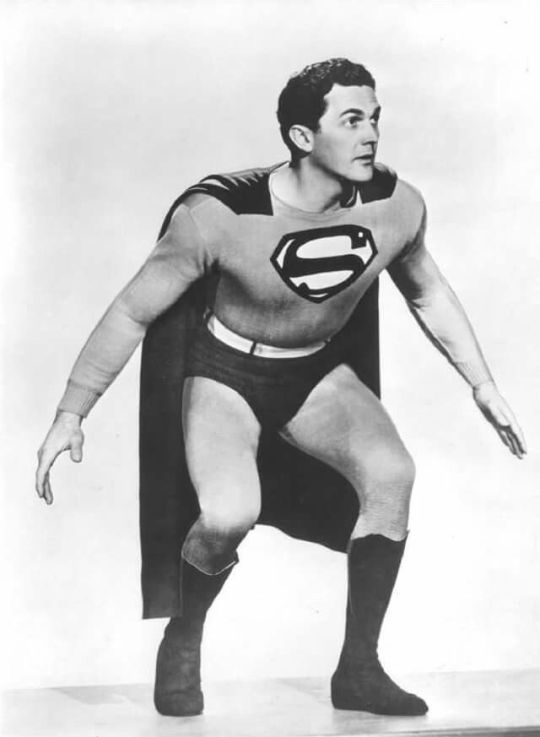
Superman ready to jump up so he can turn into a cartoon to fly.
Oh, ya think I'm kidding', do ya? Foist yer peepers on this:
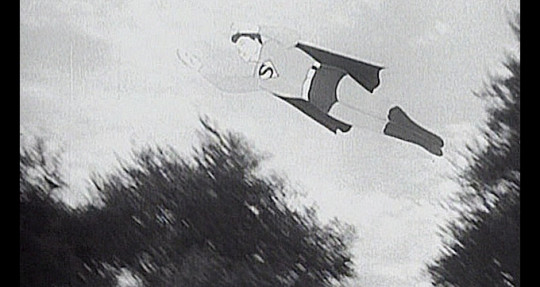
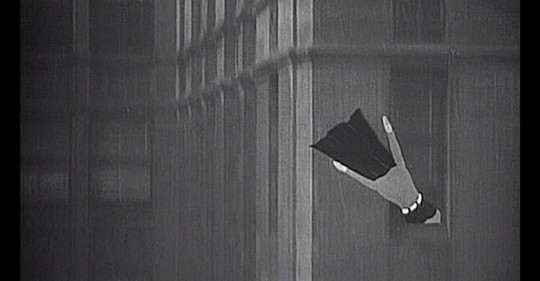
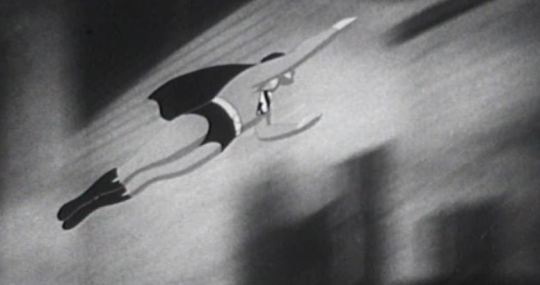


Sad, but true. Producer Sam Katzman had a reputation of being cheap (I'm sure he'd've preferred the term "frugal"), and boy does it show with this animation.
To think: if Republic Pictures had been able to make a Superman serial back in 1941 when they wanted (but were thwarted by licensing issues, so they made The Adventures of Captain Marvel instead) we might've gotten flying sequences with Superman like this:
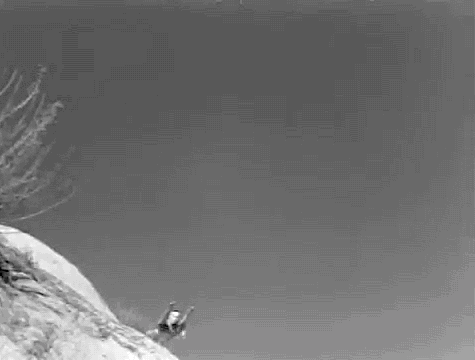
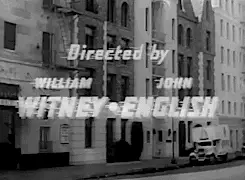
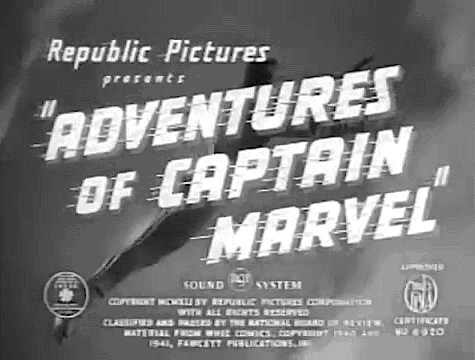
#Superman#Kirk Alyn#DC Comics#movie serials#The Adventures of Captain Marvel#Captain Marvel#Tom Tyler
22 notes
·
View notes
Text
LÉGENDES DU JAZZ
FREDDIE HUBBARD, UN GÉNIE MÉCONNU
‘’From the moment he played one note, you knew that was Freddie Hubbard. So he had a sound that was distinctive as Miles Davis, as Louis Armstrong, as Clifford Brown. I mean, he’s one of those trumpet players. He’s also an extraordinary powerful player - great stamina, great range. He swung very hard, was a beautiful ballad player {...}. He was quite a musician.’’
- Stanley Crouch
Né le 7 avril 1938 à Indianapolis en Indiana, Freddie Hubbard a commencé sa carrière musicale comme membre du groupe du Arsenal Technical High School à Indianapolis, où il a appris à jouer du tuba, du cor français et du mellaphone (une sorte de trompette), avant de fixer son choix sur la trompette et le flugelhorn. Freddie avait été initié au jazz par son frère Earmon Jr., un pianiste qui était un grand admirateur de Bud Powell.
Après avoir constaté son grand talent, le trompettiste Lee Katzman, qui avait joué dans l’orchestre de Stan Kenton, lui avait conseillé d’aller étudier au Arthur Jordan Conservatory of Music (devenu de nos jours le Jordan College of the Arts de l’Université Butler) avec Max Woodbury, le trompettiste principal de l’Indianapolis Symphony Orchestra. À l’adolescence, Hubbard avait participé à sa première session d’enregistrement en accompagnant les frères Wes et Montgomery. Il avait aussi collaboré avec le bassiste Larry Ridley et le saxophoniste James Spaulding. À la même époque où Hubbard participait à son premier enregistrement avec les frères Montgomery, il avait fondé un premier groupe nommé ‘’The Jazz Contemporaries’’ avec le bassiste Larry Ridley, le saxophoniste et flutiste James Spaulding, le pianiste Walt Miller et le batteur Paul Parker. Le groupe se produisait souvent au George’s Bar, un club très populaire sur l’Indiana Avenue.
UNE ASCENSION RAPIDE
En 1958, à l’âge de vingt ans, Hubbard s’était installé à New York. Hubbard avait connu un succès instantané en accompagnant les meilleurs musiciens de jazz de l’époque, dont Philly Joe Jones, Sonny Rollins, Slide Hampton, Eric Dolphy, J.J. Johnson et Quincy Jones. À la même période, Hubbard avait aussi partagé un appartement avec le multi-insrumentiste Eric Dolphy.
Sur la recommandation de Miles Davis, Hubbard avait signé un contrat avec Blue Note avec qui il avait enregistré son premier album comme leader en novembre 1960, intitulé ‘’Open Sesame.’’ Participaient à l’enregistrement le saxophoniste Tina Brooks, le pianiste McCoy Tyner, le bassiste Sam Jones et le batteur Clifford Jarvis. Six jours plus tard, Hubbard avait renvoyé l’ascenseur à Brooks en collaborant à son album True Blue. En l’espace d’un an, Hubbard avait enregistré deux autres albums, ‘’Going Up’’, avec McCoy Tyner et Hank Mobley, ainsi que ‘’Hub Cap’’, avec Julian Priester et Jimmy Heath.
Après avoir entendu Hubbard jouer avec le trompettiste Don Cherry, le saxophoniste Ornette Coleman l’avait invité à participer à son album ‘’Free Jazz.’’ En 1960-1961, Hubbard s’était également joint à Quincy Jones dans le cadre d’une tournée en Europe. Il avait aussi travaillé avec le batteur Max Roach.
En mai 1961, Hubbard avait collaboré avec John Coltrane sur son dernier enregistrement pour Atlantic, intitulé ‘’Olé Coltrane’’. Avec Eric Dolphy et Art Davis, Hubbard avait aussi été invité à participer au premier album de Coltrane pour Impulse, intitulé ‘’Africa-Brass.’’ En août 1961, Hubbard avait enregistré ‘’Ready for Freddy’’, sa première collaboration avec le saxophoniste Wayne Shorter, qui est considéré comme un des sommets de sa carrière. À la fin de la même année, Hubbard était devenu un partenaire régulier de Shorter lorsqu’il avait remplacé Lee Morgan avec les Jazz Messengers d’Art Blakey. Hubbard avait enregistré plus de dix albums live et en studio avec Blakey durant la période la plus productive du groupe. Les années 1960 avaient aussi été une période faste pour Hubbard, qui avait enregistré huit albums comme leader pour Blue Note, et plus d’une vingtaine comme membre d’autres formations. Hubbard était demeuré avec Blakey jusqu’en 1966, alors qu’il avait décidé de former l’un des nombreux petits groupes sous son nom. Faisaient également partie de la formation son ancien associé de Blue Note, James Spaulding, le pianiste Kenny Barron et le batteur Louis Hayes. Le groupe avait enregistré avec Atlantic.
C’est à cette époque que Hubbard avait commencé à se libérer des influences de Clifford Brown et de Lee Morgan et à développer son propre son. Il avait aussi remporté le prix du meilleur trompettiste de jazz décerné par le magazine DownBeat.
Pendant les années 1960, Hubbard avait aussi participé comme accompagnateur aux plus importants albums de l’époque, dont ‘’The Blues and Abstract Truth’’ d’Oliver Nelson, ‘’Out of Lunch!’’ d’Eric Dolphy, ‘’Maiden Voyage’’ d’Herbie Hancock, et ‘’Speak No Evil’’ de Wayne Shorter. Même s’il n’avait pas ouvertement adopté le free jazz, Hubbard avait participé à deux de ses albums-phares : ‘’Free Jazz’’ d’Ornette Coleman et ‘’Ascension’’ de John Coltrane, en plus de collaborer à l’enregistrement d’une des compositions les plus avant-gardistes de Sonny Rollins, intitulée ‘’East Broadway Run Down’’ (tirée de l’album du même nom), avec Elvin Jones et Jimmy Garrison, deux membres du célèbre quartet de John Coltrane.
‘’I don’t know how I met all these people’’, avait plus tard expliqué Hubbard. ‘’But a lot of them came to get me, too. They sought me out because they saw I wanted to experiment, and during that period, I was changing my style of the trumpet. I was trying to play the trumpet like a saxophone.’’
Le style de Hubbard avait changé après qu’il se soit établi à Hollywood dans les années 1970. En Californie, les trompettistes jouaient un rôle plus effacé et plus discret, et Hubbard avait dû s’adapter. Il racontait : ‘’You know, lifestyle out there is different from mine than in New York. I was in the Hollywood Hills, above the Bowl. I could look at the ocean on this side. I can hear the concerts free at the Bowl. And I had a big swimming pool. I had parties all the time, and the trumpet just was in the corner a lot of the time, when it should have been on my lips.’’
Hubbard avait connu son plus grand succès commercial dans les années 1970 lorsqu’il avait participé à une série d’albums pour la compagnie CTI Records de Creed Taylor, ce qui lui avait permis d’éclipser Stanley Turrentine, Hubert Laws et même George Benson. Même si ses premiers disques des années 1970, ‘’Red Clay’’, ‘’First Light’’ (qui avait remporté un prix Grammy en 1972 comme meilleure performance instrumentale par un artiste de jazz) et ‘’Sky Dive’’ avaient été plutôt bien reçus et étaient considérés comme ses meilleurs, les albums que Hubbard avait enregistrés plus tard (il avait même flirté avec le jazz-fusion en collaborant avec Red Clay dans le cadre de l’enregistrement des albums ‘’Straight Life’’, ‘’Sky Dive’’ et ‘’First Light’’) avaient été critiqués en raison de leur approche trop commerciale. L’album ‘’First Light’’ mettait en vedette les pianistes Herbie Hancock et Richard Wyands, les guitaristes Eric Gale et George Benson, le contrebassiste Ron Carter, le batteur Jack DeJohnette et le percussionniste Airto Moreira. En 1994, Hubbard avait renoué avec la chanteuse et compositrice Catherine Whitney, qui avait également collaboré à l’album ‘’First Light.’’
Après avoir signé avec Columbia, en 1977, Hubbard s’était joint au groupe tout-étoile V.S.O.P., aux côtés d’Herbie Hancock, de Tony Williams, de Ron Carter et de Wayne Shorter. Tous les membres du groupe à l’exception d’Hubbard avaient fait partie du quintet de Miles Davis au milieu des années 1960. Plusieurs des enregistrements en concert du groupe avaient été publiés plus tard. En 1978, Hubbard avait également collaboré à la pièce ‘’Zanzibar’’ du chanteur Billy Joel. La pièce était tirée de l’album ‘’52nd Street’’ qui avait remporté un prix Grammy l’année suivante comme meilleur disque de jazz.
PROBLÈMES DE SANTÉ ET DÉCÈS
Dans les années 1980, Hubbard avait fondé un nouveau groupe, cette fois avec Billy Childs et Larry Klein. Accueilli chaleureusement par la critique, le groupe avait présenté plusieurs concerts aux États-Unis et en Europe, souvent en compagnie du saxophoniste ténor Joe Henderson, avec un répertoire composé de pièces de hard bop et de jazz modal. Hubbard s’était également produit au festival de jazz de Monterey en 1980 et en 1989 (cette fois avec le vibraphoniste Bobby Hutcherson). Avec Woody Shaw, Hubbard avait enregistré deux albums pour Blue Note. Les deux hommes ont aussi joué en concert en duo de 1985 à 1987. Toujours en 1987, Hubbard avait co-dirigé l’enregistrement de l’album ‘’Stardust’’ avec Buddy Golson. L’année suivante, Hubbard avait de nouveau équipe fait avec Art Blakey à l’occasion d’un concert en Hollande, ce qui avait donné lieu à l’enregistrement de l’album ‘’Free the Wind.’’ La même année, Hubbard avait joué des solos de flugelhorn et de trompette sur deux pièces de l’album ‘’Reg Strikes Back’’ d’Elton John. En 1990, Hubbard avait fait une apparition au Japon dans le cadre d’un concert mettant en vedette le batteur Elvin Jones, le saxophoniste Sonny Fortune, les pianistes George Duke et Benny Green, les contrebassistes Ron Carter et Rufus Reid, et la chanteuse Salena Jones. Hubbard a également joué au festival de jazz de Varsovie, dans le cadre d’une performance qui avait été immortalisée sur l’album ‘’Live at the the Warsaw Jazz Festival’’, publié en 1992 par les disques Jazzmen.
Au début des années 1990, Hubbard, qui était déterminé à recommencer à jouer ce qu’il qualifiait de ‘’vrai jazz’’, s’était installé à Philadelphie et avait contribué à l’émergence de nouveaux talents en intégrant à sa nouvelle formation le contrebassiste Christian McBride, le saxophoniste Javon Jackson, le batteur Carl Allen et le pianiste Benny Green. Hubbard a également collaboré avec le New Jazz Composers Octet, avec lequel il avait joué et enregistré un album collectif dirigé par le trompettiste David Weiss.
En dépit de plusieurs problèmes de santé dont une blessure à la lèvre supérieure qui avait dégénéré en infection en 1992, Hubbard avait continué de jouer et d’enregistrer à l’occasion, même s’il n’était plus au sommet de son art comme il l’avait été au début de sa carrière. Découragé, Hubbard s’était mia à boire et avait contracté un ulcère qui avait failli causer sa mort. Hubbard expliquait: ‘’I started drinking Jack Daniel’s to feel good, you know ? Jack Daniel’s and Coca Cola. And I had an ulcer. I went over in London and I fell out. I’ve never passed out, but I lost four pints of blood. And the doctor said, ‘You’re going o clean up your body, because otherwise you’re looking to go.’ So I said, ‘Well, I’m not ready to go, so let me cool out.’’’
Refusant de se laisser abattre, Hubbard avait contribué à garder vivant le flambeau du jazz en contribuant à des cliniques et à des résidences dans de nombreux collèges américains.
Incarnation vivante du hard bop, Hubbard avait remporté plusieurs honneurs au cours de sa carrière. En 2006, la National Endowmnent for the Arts lui avait accordé la plus importante distinction remise à un musicien de jazz aux États-Unis, le NEA Jazz Masters Award. Au début des années 1970, il avait même supplanté Miles Davis dans les sondages organisés afin de désigner le meilleur trompettiste du monde du jazz.
Freddie Hubbard est mort le 29 décembre 2008 à Sherman Oaks, en Californie, à la suite de complications dues à une attaque cardiaque survenue le 26 novembre précédent. Il était âgé de soixante-dix ans. Peu avant son décès, Hubbard avait enregistré un dernier album intitulé ‘’On the Real Side.’’
À la fin de sa vie, Hubbard avait développé des liens étroits avec la Jazz Foundation of America. Hubbard expliquait: ‘’When I had congestive heart failure and couldn't work, The Jazz Foundation paid my mortgage for several months and saved my home! Thank God for those people." À la fin de sa vie, la Fondation avait d’ailleurs assuré les soins de Hubbard par l’entremise de son fonds d’urgence. Après sa mort, les héritiers du trompettiste avaient demandé que des dons admissibles pour fins d’impôt soient faits en son nom à la Jazz Foundation of America.
Considéré comme un des trompettistes les plus importants et les plus innovateurs du bop, du hard bop et du post-bop, Freddie Hubbard s’était progressivement affranchi de l’influence de géants comme Miles Davis et Clifford Brown qui avaient été ses modèles au début de sa carrière pour forger sa propre personnalité musicale. Au cours de sa longue carrière, Hubbard a enregistré plus de cinquante albums sous son nom en plus de collaborer avec les plus importants artistes de jazz de son époque. Peu après sa mort en 2008, le magazine Down Beat avait qualifié Hubbard de ‘’trompettiste le plus puissant et prolifique’’ de l’histoire du jazz (il avait enregistré plus de 300 albums en tout et pour tout, tant comme leader que comme collaborateur). Le critique de jazz Stanley Crouch le considérait comme le trompettiste le plus important et le plus original des quarante dernières années. Crouch précisait: ‘’From the moment he played one note, you knew that was Freddie Hubbard. So he had a sound that was distinctive as Miles Davis, as Louis Armstrong, as Clifford Brown. I mean, he’s one of those trumpet players. He’s also an extraordinary powerful player - great stamina, great range. He swung very hard, was a beautiful ballad player and seemed to have very few limitations in terms of getting through material, whether the material was very simple material or very complex material. He was quite a musician.’’
Le trompettiste Wynton Marsalis considérait Hubbard comme une des principales influences. Il expliquait: ‘’All the trumpet players in the ‘70’s, you can hear Freddie Hubbard’s sound and everything worth playing. He’s such a phenomenal trumpet player - just the largeness of his sound, the velocity and the swing.’’
©-2023-2024, tous droits réservés, Les Productions de l’Imaginaire historique
SOURCES :
‘’Freddie Hubbard.’’ Wikipedia, 2022.
‘’Freddie Hubbard, Trumpeter born.’’ National Endowment for the Arts, 2022.
VITALE, Tom. ‘’Freddie Hubbard : A Jazz Icon Remembered.’’ All Things Considered, 11 août 2001,
3 notes
·
View notes
Video
youtube
Miami Exposé (1956)
Miami Exposé (1956), directed by Fred F. Sears, is a compact, atmospheric slice of American film noir that brings crime and corruption in the sunshine state to life. Clocking in at just 75 minutes, this gritty black-and-white thriller offers an engaging mix of hard-boiled action, stellar performances, and a smattering of Everglades intrigue.
The Plot
The film stars Lee J. Cobb as Lt. Barton “Bart” Scott, a relentless Miami police lieutenant on a mission to dismantle rival Florida gambling rings run by gangster Louis Ascot (Michael Granger) and corrupt attorney Raymond Sheridan (Alan Napier). When Bart’s police captain is murdered, the case takes a darker turn, with Patricia Medina’s character, Lila Hodges—the wife of the gunman—becoming a crucial witness.
In true noir fashion, Lila is both a liability and a key to the case. Bart whisks her away to the Everglades, where tensions mount as the mob closes in. Cobb’s commanding performance as a tough yet morally grounded officer anchors the film, while Medina delivers a memorable portrayal of a squealing turncoat moll caught in the crossfire.
Standout Elements
Lee J. Cobb’s performance is the film’s standout feature, giving depth to a role that could have easily felt routine. His presence elevates the material, bringing a sense of gravitas and intensity that’s a hallmark of noir protagonists.
Edward Arnold shines in his role as the blackmailer Oliver Tubbs, though tragically, this was his final performance before his untimely death. The supporting cast—including Eleanore Tanin, Harry Lauter, and a brief appearance by boxing legend Jake LaMotta—further enrich the film’s gritty ambiance.
The Everglades setting adds an unusual backdrop for the genre, heightening the tension during a climactic chase scene where natural elements become as threatening as the mobsters themselves.
Behind the Scenes
Fred F. Sears directs with a steady hand, keeping the pacing brisk and the tone consistently tense. The film is written by Robert E. Kent and James B. Gordon, based on a story by Sam Katzman. Benjamin H. Kline’s cinematography captures the moody black-and-white aesthetic that defines classic noir, while Mischa Bakaleinikoff’s score underscores the suspense.
Final Thoughts
Miami Exposé might not be a heavyweight in the film noir canon, but it delivers an entertaining and well-acted story that fans of the genre will appreciate. Cobb’s magnetic performance, combined with the film’s lean storytelling and evocative atmosphere, makes it a hidden gem worth revisiting.
#youtube#classic movies#filmnoir#MiamiExpose#FredFSears#LeeJCobb#EdwardArnold#PatriciaMedina#1950scinema#CrimeThriller#Floridashotmovies#Florida#Miami#columbia pictures
0 notes
Text
THE WEREWOLF (1956) – Episode 186 – Decades of Horror: The Classic Era
“When the rest of the world has been destroyed, we will be the only normal thinking persons left.” Heck, that’s already true. Right, Grue-Believers? Join this episode’s Grue-Crew – Daphne Monary-Ernsdorff, Chad Hunt, Doc Rotten, and Jeff Mohr – as they check out an underappreciated low-budget horror, The Werewolf (1956).
Decades of Horror: The Classic Era Episode 186 – The Werewolf (1956)
Join the Crew on the Gruesome Magazine YouTube channel! Subscribe today! And click the alert to get notified of new content! https://youtube.com/gruesomemagazine
ANNOUNCEMENT Decades of Horror The Classic Era is partnering with THE CLASSIC SCI-FI MOVIE CHANNEL, THE CLASSIC HORROR MOVIE CHANNEL, and WICKED HORROR TV CHANNEL Which all now include video episodes of The Classic Era! Available on Roku, AppleTV, Amazon FireTV, AndroidTV, Online Website. Across All OTT platforms, as well as mobile, tablet, and desktop. https://classicscifichannel.com/; https://classichorrorchannel.com/; https://wickedhorrortv.com/
Two scientists receive an unconscious man who has been in a car accident. In their lab, they inject him with a serum they’ve been working with. Sadly, the serum turns the man into a murderous werewolf.
Directed by: Fred F. Sears
Writing Credits: Robert E. Kent & James B. Gordon
Produced by: Sam Katzman
Cinematography by: Edward Linden (director of photography)
Makeup Dept: Clay Campbell (makeup artist) (uncredited)
Selected Cast:
Steven Ritch as The Werewolf / Duncan Marsh
Don Megowan as Sheriff Jack Haines
Joyce Holden as Amy Standish
Eleanore Tanin as Mrs. Helen Marsh
Kim Charney as Chris Marsh
Harry Lauter as Deputy Ben Clovey
Larry J. Blake as Hank Durgis
Ken Christy as Dr. Jonas Gilcrist
James Gavin as Mack Fanning
S. John Launer as Dr. Emery Forrest
George Lynn as Dr. Morgan Chambers (credited as George M. Lynn)
George Cisar as Hoxie
Don C. Harvey as Deputy (uncredited)
Jean Harvey as Ma Everett (uncredited)
Charles Horvath as Joe Mitchell (uncredited)
Fred F. Sears as Narrator (voice) (uncredited)
Low-budget films driven by fads were the forte of producer Sam Katzman (Rock Around the Clock, 1956). Pair that with director Fred F. Sears (Earth vs. the Flying Saucers, 1956), who is known for bringing films in on time and under budget. Now add Clay Campbell, makeup artist for The Return of the Vampire (1943); Don Megowan, the on-land Gill-Man in The Creature Walks Among Us (1956); and a cast filled with extraordinary character actors, and you get The Werewolf (1956), a surprisingly good science fiction version of lycanthropy! The Grue-Crew had great fun in their talkabout of this lesser-known werewolf film that preceded I Was a Teenage Werewolf (1957).
At the time of this writing, The Werewolf (1956) is available to stream from Tubi and PPV from Amazon and AppleTV. It’s also available on physical media as one of 4 films included in Cold War Creatures: Four Films from Sam Katzman (4-Disc Standard Special Edition) [Blu-ray] from Arrow Video. The other films included are Creature with the Atom Brain (1955), Zombies of Mora Tau (1957), and The Giant Claw (1957).
Gruesome Magazine’s Decades of Horror: The Classic Era records a new episode every two weeks. Next in their very flexible schedule – this one chosen by Doc – is The Ghost in the Invisible Bikini (1966)! Yes, the last of the Beach Party movies starring Deborah Walley, Tommy Kirk, and a bit of Basil Rathbone and Boris Karloff. Eric von Zipper, anyone?
Please let them know how they’re doing! They want to hear from you – the coolest, grooviest fans: leave them a message or leave a comment on the Gruesome Magazine YouTube channel, the site, or email the Decades of Horror: The Classic Era podcast hosts at [email protected]
To each of you from each of them, “Thank you so much for watching and listening!”
Check out this episode!
0 notes
Photo

The Werewolf | 1956
#The Werewolf#Steven Ritch#Sam Katzman#werewolf#monster makeup#horror#Fred F. Sears#monster movie#wolfman#lycanthrope#Hammersmith Horror#horror movies#seeing red
499 notes
·
View notes
Video
🗽Bowery Boys | Bowery Blitzkrieg (1941) | Comedy Full Movie English
Bowery Blitzkrieg is a 1941 US comedy film directed by Sam Katzman. It is the sixth film of the East Side Kids series. The film "introduced" Huntz Hall in his first of the East Side Kids film series. While Hall's character would be called "Glimpy" for the remainder of the series, here he's called "Limpy". The East Side Kids Leo Gorcey as Muggs McGinnis Bobby Jordan as Danny Breslin Huntz Hall as Limpy Donald Haines as Skinny Ernie "Sunshine Sammy" Morrison as Scruno David Gorcey as Peewee Additional cast Bobby Stone as Monk Martin Keye Luke (billed as Key Luke) as Clancy Warren Hull as Tom Brady Charlotte Henry as Mary Breslin Martha Wentworth as Mrs. Brady Jack Mulhall as Officer Sherrill Eddie Foster as Slats Morrison Dennis Moore as Dorgan Tony Carson as Dutch Pat Costello as Fight Coach Dick Ryan as The Precinct Lieutenant Jack Carr (uncredited) as George, Truck Driver Never miss a video. Join the channel so that Mr. P can notify you when new videos are uploaded: https://www.youtube.com/@nrpsmovieclassics
0 notes
Text
INVISIBLE GHOST Bela Lugosi - reviews and free online
Invisible Ghost is a 1941 horror film in which a town’s leading citizen becomes a homicidal maniac after his wife deserts him. The movie was directed by Joseph H. Lewis (The Mad Doctor of Market Street) from a story and screenplay by Helen and Alan Martin (Invasion of the Saucer Men; The Eye Creatures). Sam Katzman (Spooks Run Wild; The Corpse Vanishes; Bowery at Midnight) produced. The Sam…
#1941#Bela Lugosi#Clarence Muse#free on Tubi#free on YouTube#free online#horror#Invisible Ghost#Joseph H. Lewis#movie film#review reviews#Sam Katzman
0 notes
Text

200 Films of 1952
Film number 178: Jungle Jim in the Forbidden Land
Release date: March 17th, 1952
Studio: Katzman Corp, Columbia
Genre: adventure
Director: Lew Landers
Producer: Sam Katzman
Actors: Johnny Weissmuller, Angela Greene
Plot Summary: Anthropologist Dr. Linda Roberts goes to a Southeast Asian (?) jungle looking for a race of “Giant People,” who can provide a missing link to humans. Her guide on the journey is Jungle Jim, a man who has spent years living in wild. On the way they encounter unscrupulous ivory hunters, hippos, panthers, and all manner of dangers.
My Rating (out of five stars): *¾
Wheew, where can I start with this one? First, it must be made clear that this is a short and cheap “programmer” meant to play before the feature film. Everything about it is low grade. It’s baaad. But it’s also one of the more entertaining bad films I’ve seen for the project. Would I recommend watching it? No, unless you just fast forward until you get to some of the insane special effects! (minor spoilers)
The Good:
Angela Greene as Dr. Roberts. She was by far the best actor in the ensemble- everyone else made her look like Bette Davis or Ethel Barrymore. She was very lovely to look at as well, and they put her in jodhpurs, which always make me weak in the knees!
It wasn’t boring at least!
The special effects! OMG, they were so bad they were hilarious. I had to pause the film more than once because I couldn’t stop laughing. When I was in high school, my friends and I made movies, and I kid you not, some of our special effects on a budget of less than $50 looked comparable.
The fictional name of the location in the film was Wasabi. I’m sure most Americans in 1952 would have had no other association with the word, but it made me laugh.
The Bad:
Weissmuller’s acting. When he played Tarzan, his stiffness wasn’t as noticeable because he spoke few words in very broken English. Here, it was painfully obvious that he just could not act. It sounded like he was reading a textbook in front of a class. It was kind of charming at times, though.
The Giant People! Oh my gawd, what a letdown! The film spent a large portion of its running time building up these mysterious beings, so when they finally appeared I was like, “Wait, WHAT?” They were barely more than 6 feet tall, and they were clearly just people draped in fur wearing werewolf/sasquatch masks!
You could tell the poor elephants in this were forced to wear fake ivory tusks. It was sad.
The native people looked and acted like the worst stereotypes of "jungle savages." Some of them were clearly white as well.
The plot started out ok, but it became a cluttered mess as it went on. There were too many different crossing plots and different groups of bad guys. It didn’t ever get confusing, but it got frustratingly muddled.
There was a little too much stock footage of jungle animals. It reminded me of The Jungle, because it lost its effectiveness quickly.
The black panther wrestling scene! This is at least the third 1952 movie I’ve seen where a man wrestles and wins a fight with a panther or mountain lion. (The Black Castle and Desperate Search are the others that come to mind.) In all of these movies the hero is obviously rolling around on the ground with a big stuffed animal. No amount of editing can hide it, and no amount of restraint can stop you from laughing!
The hippo fighting scene! Here I literally had to pause the film to catch my breath and stop laughing. I even rewound it to watch it again. Our brave Jungle Jim swims under water and stabs a “hippo,” but I bet I could make one out of paper mache that would look just as convincing!
The sound effects were as hilariously bad as the visual ones. The growls and screams were especially over the top.
A clueless chimp running around with a gun is so funny, isn’t it? When he accidently shoots it and runs off screaming with it, that’s a great way to end a movie with a joke, right? Right?
0 notes
Text

Frederick Dewayne Hubbard (April 7, 1938 – December 29, 2008) was a jazz trumpeter. He played bebop, hard bop, and post-bop styles from the early 1960s onwards. His unmistakable and influential tone contributed to new perspectives on modern jazz and bebop.
He started playing the mellophone and trumpet in his school band at Arsenal Technical High School in Indianapolis. Trumpeter Lee Katzman, former sideman with Stan Kenton, recommended that he begin studying at the Arthur Jordan Conservatory of Music (now the Jordan College of the Arts at Butler University) with Max Woodbury, the principal trumpeter of the Indianapolis Symphony Orchestra. In his teens, he worked locally with brothers Wes and Monk Montgomery and worked with bassist Larry Ridley and saxophonist James Spaulding. In 1958, he moved to New York and began playing with some of the best jazz players of the era, including Philly Joe Jones, Sonny Rollins, Slide Hampton, Eric Dolphy, J. J. Johnson, and Quincy Jones. On June 19, 1960, he made his first record as a leader, Open Sesame, at the beginning of his contract with Blue Note Records, with saxophonist Tina Brooks, pianist McCoy Tyner, bassist Sam Jones, and drummer Clifford Jarvis. Six days later he returned the favor to Brooks and recorded with him on True Blue.
In 2006, the National Endowment for the Arts accorded him its highest honor in jazz, the NEA Jazz Masters Award. #africanhistory365 #africanexcellence
0 notes
Text
It came from beneath the sea- 1955 Sci-Fi/ Horror film
After an encounter at sea with an unknown underwater creature, a naval commander works with two scientists to identify it. The creature they are dealing with is a giant, radioactive octopus that has left its normal feeding grounds in search of new sources of replenishment. As the creature attacks San Francisco, the Navy tries to trap it at the Golden Gate Bridge but it manages to enter the Bay area leading to a final confrontation with a submarine.


This classic 1955 film poster boats special effects by the late great Ray Harryhausen. It is a typical vintage B-Movie poster, rich in colour and texture. The radioactive colour font in the title depicts the storyline.
To keep shooting costs low, director Robert Gordon shot inside an actual submarine, both above and under water, using handheld cameras. When animator Ray Harryhausen's special effects were budgeted, studio head Sam Katzman allowed Harryhausen only enough money for animating six of the octopus' eight tentacles; two were eliminated on the final shooting miniature. For the scenes where a single tentacle is seen moving on screen, Harryhausen used a large model tentacle instead of employing the complete stop-motion animation model. Some of the later Golden Gate bridge scenes employ a shooting miniature of a bridge support; these were composited in post-production over live footage of the real support.


0 notes
Photo
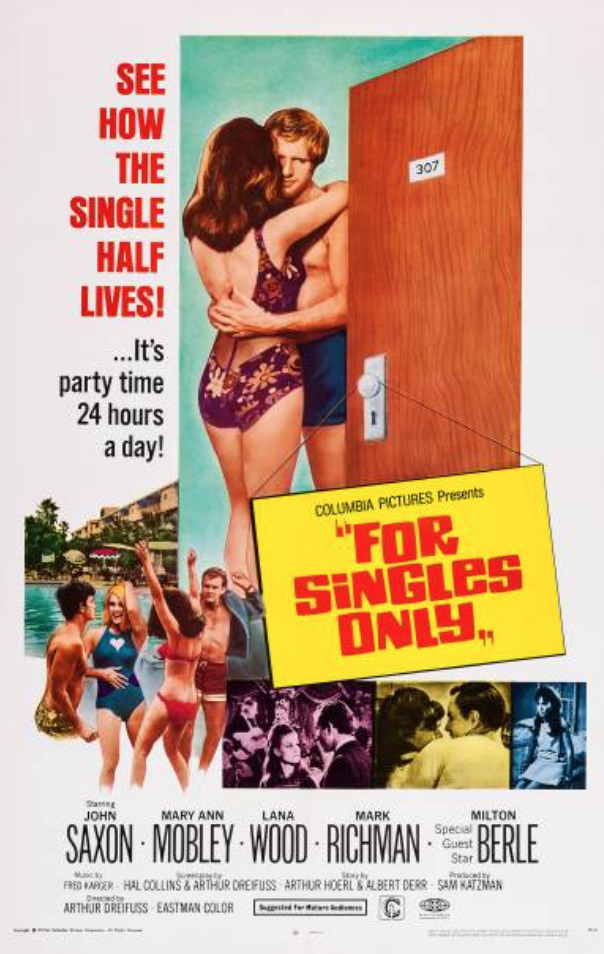
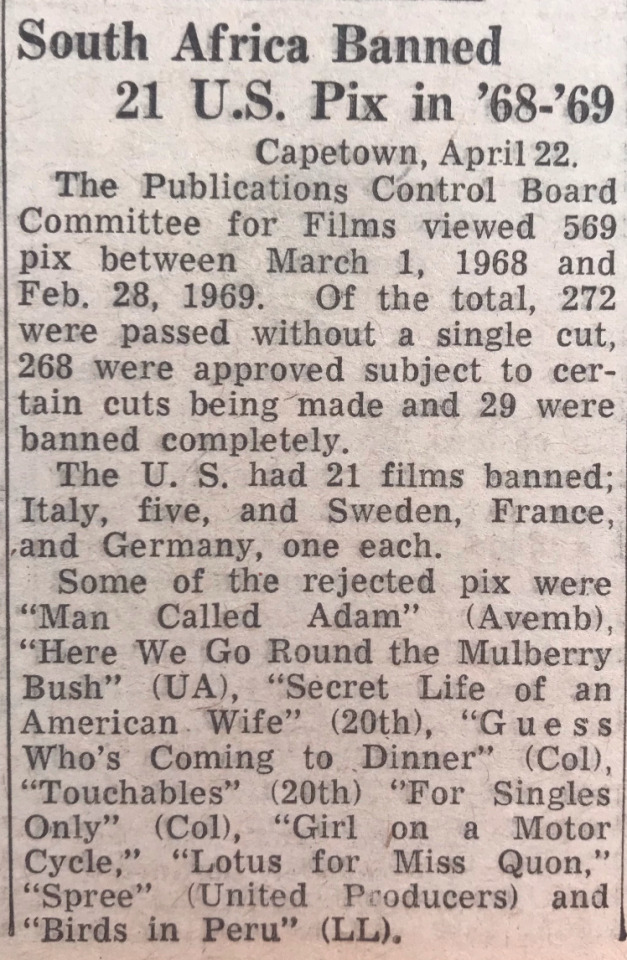

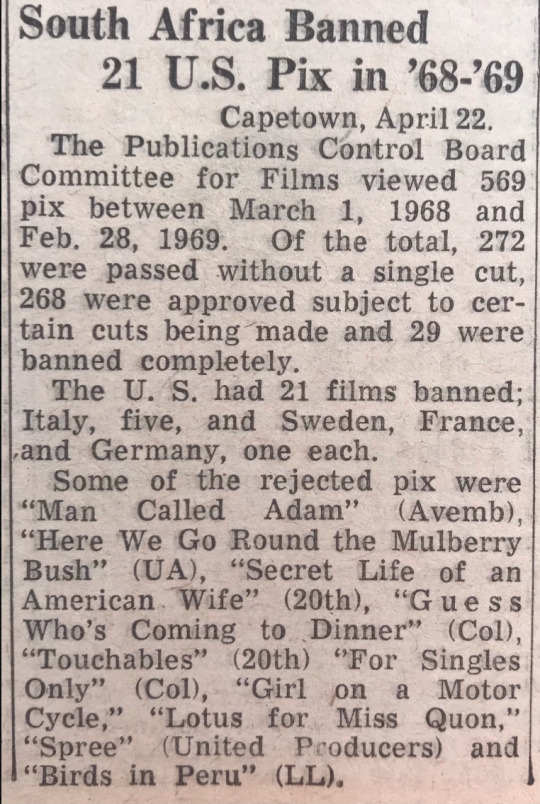
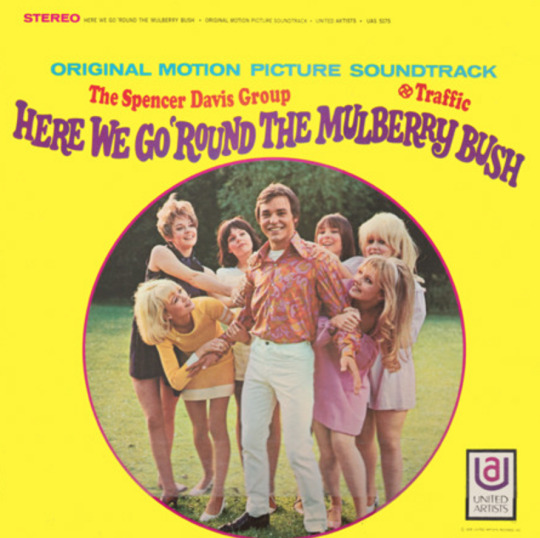


Banned under Apartheid
19 notes
·
View notes